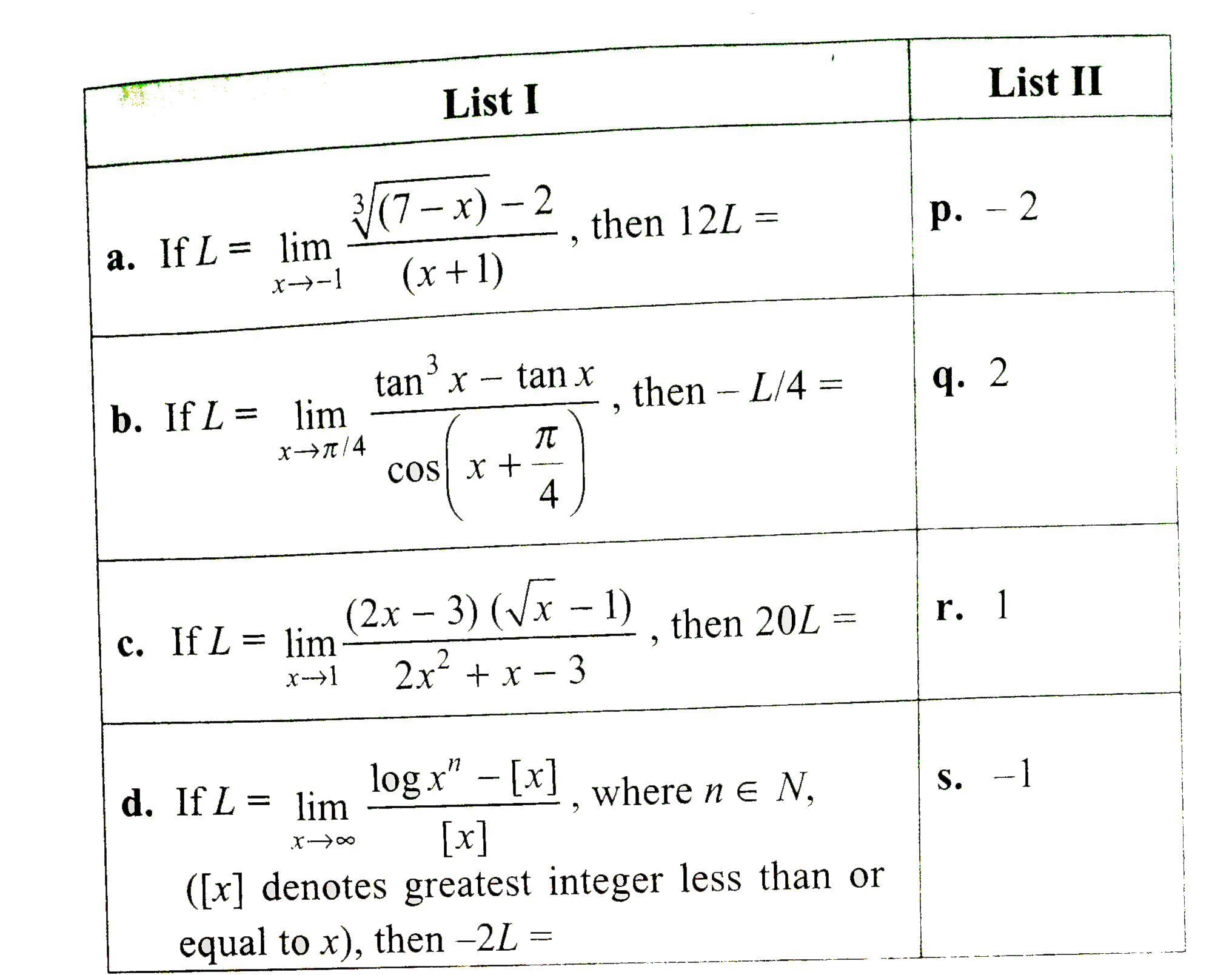limx→0[sin(sgn(x))(sgn(x))], where [.] denotes the greatest integer function, is equal to Solution in Bengali
The correct Answer is:A
limx→0+[sin(sgnx)sgn(x)]=limx→0+[sin11]=0
limx→0−[sin(sgnx)sgn(x)]
=limx→0−[sin(−1)−1]
=limx→0−[sin1]
Hence, the given limit is 0.
Topper's Solved these Questions
- LIMITSBOOK - CENGAGE PUBLICATIONCHAPTER - LIMITSEXERCISE - Linked Comprehension Type
20 Videos
- LIMITSBOOK - CENGAGE PUBLICATIONCHAPTER - LIMITSEXERCISE - Matrix Match Type
5 Videos
- LIMITSBOOK - CENGAGE PUBLICATIONCHAPTER - LIMITSEXERCISE - EXERCISE 2.8
8 Videos
- JEE 2019BOOK - CENGAGE PUBLICATIONCHAPTER - JEE 2019EXERCISE - Chapter 10
8 Videos
- LINEAR COMBINATION OF VECTORS, DEPENDENT AND INDEPENDENT VECTORSBOOK - CENGAGE PUBLICATIONCHAPTER - LINEAR COMBINATION OF VECTORS, DEPENDENT AND INDEPENDENT VECTORSEXERCISE - DPP 1.2
10 Videos
Similar Questions
Letf(x)=sin−1(1−{x})×cos−1(1−{x})√2{x}×(1−{x}), where {x} denotes the fractional part of x.
L=limx→0−f(x) is equal to
View SolutionMatch the following lists:

View SolutionEvaluate limx→1cosπ2x1−√x
View SolutionIf y = y(x) is the solution of the differential equation, xdydx+2y=x2 satisfying y(1) = 1, then y(12) is equal to
View SolutionThe number of integral values of p for which (p+1)ˆi−3ˆj+pˆk,pˆi+(p+1)ˆj−3ˆk and −3ˆi+pˆj+(p+1)ˆk are linearly dependent vectors is q
View Solution(lim)x→0[sin(sgn(x))(sgn(x))], where[.] denotes the greatest integer function, is equal to 0 (b) 1 (c) −1 (d) does not exist
View SolutionPeriod of f(x)=sgn([x]+[-x]) is equal to (where [.] denotes greatest integer function
View SolutionThe value of ∫10−1sgn(x−[x])dx is equal to (where, [:] denotes the greatest integer function
View SolutionIf F(x)=sinπ[x]{x} then F(x) is (where {.} denotes fractional part function and [.] denotes greatest integer function and sgn(x) is a signum function)
View Solutionlimx→0[sin(sgn(x))(sgn(x))], where [.] denotes the greatest integer function, is equal to
View SolutionLet f(x)=exsgn(x+[x]) , where sgn is the signum function and [x] is the greatest integer function . Then
View Solution(lim)x→0[sin(sgn(x))(sgn(x))], where[.] denotes the greatest integer function, is equal to (a)0 (b) 1 (c) −1 (d) does not exist
View SolutionPeriod of f(x)=sgn([x]+[−x])is equal to (where [.] denotes greatest integer function
View Solutionlimx→0[sin(sgn(x))(sgn(x))], where [.] denotes the greatest integer function, is equal to
View SolutionPeriod of f(x)=sgn([x]+[−x])is equal to (where [.] denotes greatest integer function
View SolutionThe value of ∫10−1sgn(x−[x])dx is equal to (where, [:] denotes the greatest integer function
View Solution
